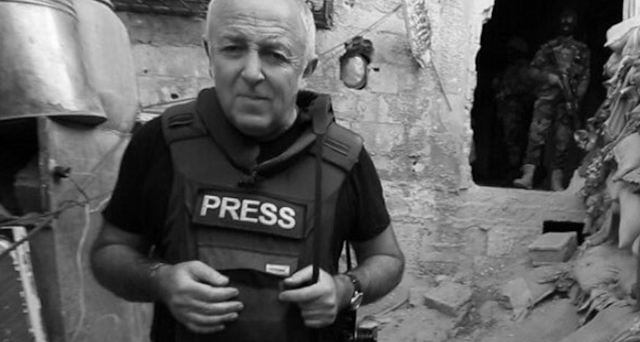Who would want to be a journalist covering the conflict in Gaza? It seems that every day a new accusation of bias surfaces on social media. Live reporting is prone to the dangers of speculation, mistakes and disinformation traps for the unwary. If you add in the most explosive dateline in the world, then the accusations of bias come thick and fast. On the other hand, Phil Chetwynd, global news director at AFP, a French news agency, says: “Our work has never felt more important.”
In this conflict, most of the dangerous reporting has been done by Palestinian journalists living inside Gaza, with foreign correspondents limited to coverage from inside Israel and the West Bank. To date, 40 journalists are reported to have been killed in the fighting, 35 of them Palestinian.
Jon Donnison, a BBC correspondent, was accused of anti-Israel bias when reporting in the immediate aftermath of the explosion at the Al-Ahli Hospital on October 17. Donnison said that the Israeli military had been contacted for comment and was still investigating: “But it is hard to see what else this could be really given the size of the explosion other than an Israeli air strike or several air strikes.”
Following Israel’s denial, the deputy chief executive of BBC News Jonathan Munro said the “language wasn’t quite right” but that “at no stage did we actually say it was caused by the Israelis”.
The BBC has also been under fire for not using the word “terrorists” to describe Hamas militants. This long-standing BBC tradition of not labelling one side or the other in a conflict as terrorists, has been condemned in some media and at Westminster but has been rigorously defended by veteran correspondents, including John Simpson:
We don’t take sides. We don’t use loaded words like “evil” or “cowardly”. We don’t talk about “terrorists”. And we’re not the only ones to follow this line. Some of the world’s most respected news organisations have exactly the same policy.
Embedded with antagonists
A month after the October 7 Hamas attacks on Israel, several of these respected news organisations also came under attack for allegedly being at the locations suspiciously quickly. The US-based pro-Israeli website Honest Reporting named the news organisations as The New York Times, CNN, AP and Reuters. They have all vehemently denied the accusations.
AFP, which was also later accused on social media of being suspiciously early to the locations where the attacks took place, denied it had been somehow “embedded” with Hamas. AFP’s Phil Chetwynd threatened possible legal action for defamation, saying about his photographers in Gaza:
They were woken by the sound of artillery and rocket fire and headed towards the fence between Gaza and Israel. Each one was clearly identified as a journalist, on their helmet and bulletproof vest. The first photos near the Gaza fence were taken more than an hour after the attack started … We covered it as we would cover any major news story.
Nonetheless, after the event both AP and CNN did “sever ties” with a “freelance journalist” called Hassan Eslayeh who was at the site of the killings and was not wearing a press jacket.

A picture of this man being embraced by Hamas leader Yahia Sinwar was circulated on social media platforms. AP’s media relations director, Lauren Easton, said: “We are no longer working with Hassan Eslaiah, who had been an occasional freelancer for AP and other news organisations in Gaza.”
Another kind of “embedding” has also been under scrutiny, following press trips with the Israel Defence Forces (IDF) into Gaza on November 9. This trip included reporters from CNN, the Daily Mail, and the BBC (who sent Jeremy Bowen). Channel 4 News went subsequently.
On “X” this decision was widely criticised, with Rohan Talbot, the director of advocacy and campaigns for Medical Aid for Palestinians, saying this was tantamount to senior journalists “effectively acting as stenographers for Israel’s military comms machine”.
When I put this to Bowen at the weekend, he replied: “Nonsense. The question is what you do with the material and how you challenge the speakers they put up. It’s also important in the script to provide context. We had a choice – to stay out of Gaza or to accept some restrictions in return for access.” While the IDF checked the video to make sure no military operational details were disclosed, neither the BBC nor Channel 4 News had to show their scripts in advance.
Time-honoured practice
These kinds of embedding practices are common when covering wars. From the Boer war to the Gulf wars of 1991 and 2003, international journalists and photographers have been embedded with troops and have had their material censored if it might have given away operational information, but also sometimes if it might show troops in a bad light.
The question of “ethical considerations” comes up more frequently if embedding with a country’s opponents in a war or interviewing those understood to be “the enemy”. According to Christina Lamb, back in the Spanish civil war, US reporter Virginia Cowles was regarded as “particularly suspect” by her fellow journalists Ernest Hemingway and Martha Gellhorn for interviewing leaders on both sides of the conflict.

Media history is full of cases of journalists, photographers and camera operators covering the other side. During the 1960s war in Indochina, Visnews cameraman Neil Davies filmed from the South Vietnamese side and later with the Vietcong. In the 1980s, ITN’s Sandy Gall regularly embedded with the Afghan Northern Alliance, and during the Gulf war of 1991, the CNN team was criticised for staying behind enemy lines during the allied bombing of Baghdad.
While media companies can hold meetings to thrash out the ethical implications of embedding decisions, the problem today is how to know anything of substance about the activity and connections of the many freelancers who often now stand in for staff employees on the frontline.


